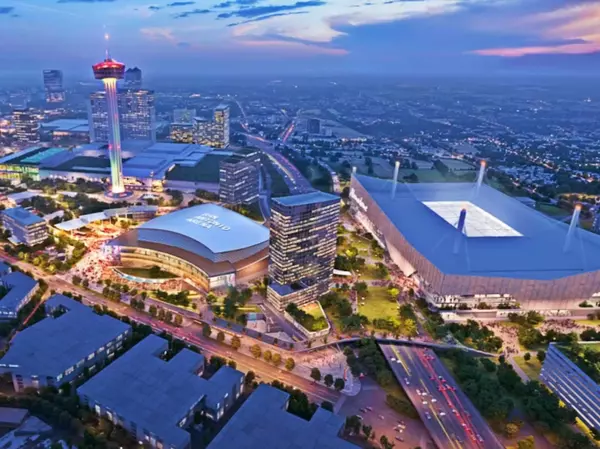Texas Legislature Unlocks Affordable Housing Pathways in San Antonio
San Antonio families have been navigating a housing market squeezed by rising home prices, limited starter-home supply, and higher mortgage rates. For many, the dream of homeownership has felt out of reach. Recognizing this, the Texas Legislature has passed a wave of reforms designed to expand affordable housing opportunities across the state, with San Antonio set to be one of the biggest beneficiaries.
What Changed in 2025?
The Legislature’s housing package includes several bills aimed at tackling affordability head-on:
-
Senate Bill 15 – Reduces minimum lot-size requirements in new subdivisions, making it easier for builders to deliver smaller, more affordable homes.
-
Senate Bill 840 & Senate Bill 2477 – Allow the conversion of vacant commercial and office spaces into residential housing without the lengthy rezoning process. This opens the door for adaptive reuse projects in San Antonio’s underutilized retail centers and business parks.
-
House Bill 24 – Ends the so-called “tyrant’s veto”, which previously allowed a small minority of neighbors to block affordable housing developments.
-
Senate Bill 2835 – Authorizes the construction of single-stair apartment buildings, lowering development costs and encouraging more multifamily housing.
Together, these changes aim to lower barriers for builders, reduce construction costs, and expand the types of housing that can be offered across San Antonio.
Why This Matters for San Antonio
San Antonio is one of the fastest-growing cities in the U.S., and demand for housing has consistently outpaced supply. With population growth driven by veterans, military families, and young professionals relocating for jobs, affordability has become one of the city’s defining challenges.
These reforms are expected to:
-
Increase housing supply by enabling more starter homes, townhomes, and duplexes.
-
Encourage revitalization of vacant commercial properties, turning old strip malls, warehouses, and office buildings into mixed-use communities.
-
Lower development costs, which could help stabilize home prices in a market where affordability is a top concern.
Who Benefits Most?
-
Veterans & Military Families: With VA loan benefits already making homeownership more accessible, the expansion of affordable housing stock creates new opportunities for service members to buy in San Antonio without stretching budgets.
-
First-Time Buyers: Millennials and Gen Z buyers facing student debt and wage pressures gain access to smaller, more affordable entry points into the housing market.
-
Seniors & Multigenerational Households: With flexible designs and more options, families can better support aging parents or adult children while staying under one roof.
-
Investors & Developers: Adaptive reuse projects and streamlined permitting present new opportunities for those looking to build long-term value in San Antonio’s growing neighborhoods.
The Bigger Picture
San Antonio’s housing market has seen:
-
Rising cancellations: The city leads the nation in canceled home sales, reflecting affordability pressures.
-
Tiny homes under $200K selling out: Communities like Elm Trails and Southton Meadows show buyers are hungry for creative, budget-friendly options.
-
Apartment growth: Nearly 6,000 new apartment units are expected in 2025, ranking San Antonio 17th in the nation for multifamily construction.
The Legislature’s reforms arrive at exactly the right time to address these market shifts, offering a roadmap for a more balanced housing ecosystem.
Frequently Asked Questions (FAQ)
1. How soon will these legislative changes impact San Antonio’s housing market?
Some changes, like reduced lot-size requirements, may be implemented quickly by builders in upcoming subdivisions. Others, such as commercial-to-residential conversions, may take several years to appear as large-scale projects.
2. Can veterans use VA loans for the new affordable housing options?
Yes. VA loans can be applied to many of the new starter homes and adaptive reuse projects that qualify as primary residences, making these reforms especially valuable for military families.
3. What does the end of the “tyrant’s veto” mean for homeowners?
It means new affordable housing developments are less likely to be stalled or blocked by a small group of neighbors, clearing the way for projects that benefit the broader community.
4. Will smaller lot sizes reduce home quality?
Not necessarily. Builders are innovating with floorplans that maximize space and functionality, often with features like open layouts, flex rooms, and energy-efficient designs to keep homes livable and attractive.
5. How do single-stair apartments lower costs?
By simplifying construction requirements, builders can reduce expenses and pass savings on to renters. This increases the supply of affordable multifamily units without compromising safety standards.
For San Antonio buyers, these new laws mean more choices, more affordable options, and greater flexibility in finding the right home. For sellers, they signal a more competitive market where positioning your property effectively is key. For veterans and first-time buyers, they represent a much-needed lifeline toward building equity and stability.
As these reforms take hold, San Antonio is poised to lead Texas in innovative, affordable, and inclusive housing solutions.
👉 Curious how these changes affect your buying or selling plans? Reach out to Christopher Beal, Realtor – Veteran Real Estate San Antonio: The Beal Group for a personalized strategy that works in today’s evolving market.
Categories
Recent Posts











